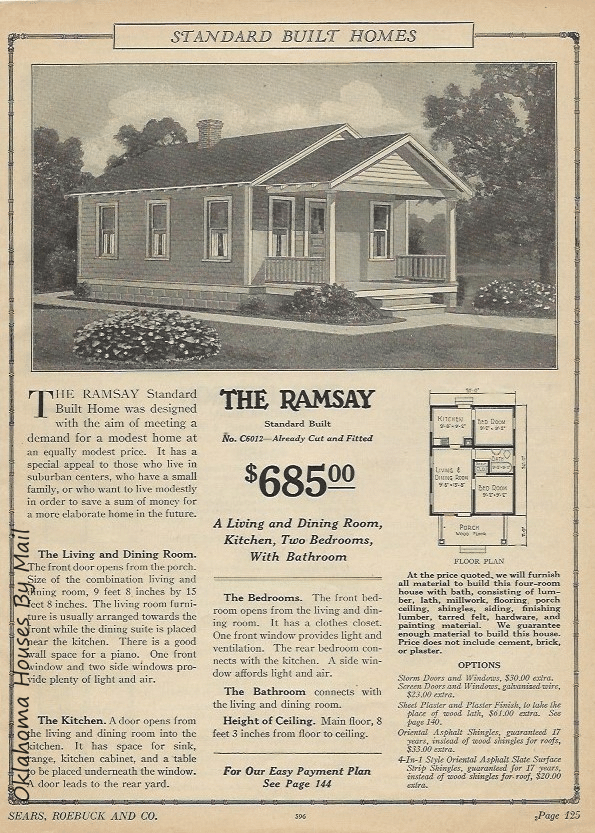Sears Catalog Homes: A Historical Overview and Current Market Insights
Sears, Roebuck and Company was more than just a retail powerhouse; it played a significant role in American housing history. Between 1908 and 1940, the company sold mail-order homes, revolutionizing the path to homeownership in the United States through its innovative catalog offerings.
The Evolution of Sears Catalog Homes
Sears introduced the first Modern Homes Catalog in 1908, allowing potential homeowners to pick from a variety of home designs. After selecting their preferred model, customers could order all necessary materials, which would arrive via mail.
In 1912, the base price for a Sears home kit was approximately $650, equivalent to about $22,000 today, not including the land or installation services. The packages contained high-quality, pre-cut components that were durable and easy to assemble, showcasing Sears’ commitment to quality.
Through the 1910s, the brand became increasingly popular, streamlining production and expanding payment options—turning it into a go-to source for clothing, furniture, and homes alike. Families utilized these kits to create their dream residences with relative ease.
Innovations and Growing Popularity
By 1915, Sears offered an impressively diverse range of home styles, with around 370 models available across various catalogs. The 1920s marked a peak in demand, driven by economic growth and the convenience of mail-order purchasing. Sears adapted to these trends by including modern amenities like plumbing and electrical fixtures in their offerings.

Challenges During Economic Shifts
Even as the Great Depression took hold, Sears catered to evolving market needs by offering smaller, affordable homes. However, sales declined, leading to the unfortunate halt of the home kit program in 1940, effectively ending a distinct chapter in American housing history.
Sears Homes Today: Value and Market Availability
Despite Sears exiting the housing market, its legacy persists. Reports suggest the company sold over 70,000 kits, with many structures still standing and finding their way onto today’s real estate listings. Current values for these homes typically range from $300,000 to over $1 million, significantly influenced by their historical appeal and quality craftsmanship.
Identifying a Sears Kit Home
If you’re curious whether a property is a Sears home, consider the following steps:
- Inspect Construction Materials: Note architectural styles such as Craftsman bungalows or Colonial Revivals, which are prevalent in these homes.
- Look for Markings: Check for stamped lumber or shipping labels, often hidden behind millwork that can confirm its Sears heritage.
- Research History: Investigate the home’s original owner and construction date through local archives for potential ties to the Sears catalog.
- Consult Experts: Reach out to historians or preservation specialists, or join online communities focused on Sears homes for insights.
Value Comparison Over Time
The following table displays the original pricing, inflation-adjusted values, and recent sale prices of selected Sears homes:
| Sears House Model | Original Price (Year) | Inflation-Adjusted Price (2025) | Recent Sale Price |
|---|---|---|---|
| Magnolia | $6,488 (1921) | $86,700 | $310,600 (Off-market; 2025 Zestimate) |
| Vallonia | $1,979 (1920) | $32,000 | $245,000 (2024) |
| Starlight | $1,200 (1922) | $20,000 | $160,000 (2016) |
| Barrington | $2,425 (1926) | $43,839 | $325,000 (2024) |
Note: Prices have been inflation-adjusted based on historical rates, while recent sale figures may differ based on various factors such as condition and location.
Strategies for Marketing Sears Homes
Real estate agents can leverage the unique aspects of Sears homes in their marketing efforts:
- Highlight Historical Significance: Use blog posts and social media to share the intriguing history behind these homes.
- Emphasize Craftsmanship: Showcase features like solid wood construction and vintage trim work in property listings.
- Target Niche Audiences: Network with history enthusiasts and vintage home lovers to build interest in these properties.
- Create Virtual Tours: Implement high-quality visuals and virtual tours to attract potential buyers.
- Host Open Houses: Organize events to introduce interested buyers to the charm of these homes.
- Utilize Social Media: Promote listings on platforms to reach those interested in historical architecture.
Conclusion
Sears catalog homes represent a significant chapter in American history, characterized by their unique architectural designs and the promise of affordable homeownership. If you own or are considering buying one of these historic homes, their value is not only monetary but also tied to a rich heritage. Share your experiences with Sears homes in the comments below!
Frequently Asked Questions
Can you still buy houses from Sears?
Sears discontinued its kit homes in the 1940s, but many remain preserved and can occasionally be found on the market.
How can you tell if your house is a Sears house?
Look for unique features, stamping on lumber, and consult old Sears catalogs for matches to your home’s design.
In which states are Sears houses most prevalent?
The highest concentrations of Sears homes are found in Illinois, Michigan, and Ohio, with others scattered across various states.
Are Sears houses today still valuable?
These homes retain significant market value, appealing to buyers interested in craftsmanship and architectural heritage.
How did Sears catalog houses work?
Buyers selected a model from the Sears catalog, paid for the kit, which included pre-cut materials and instructions, and assembled it themselves or through a contractor.


